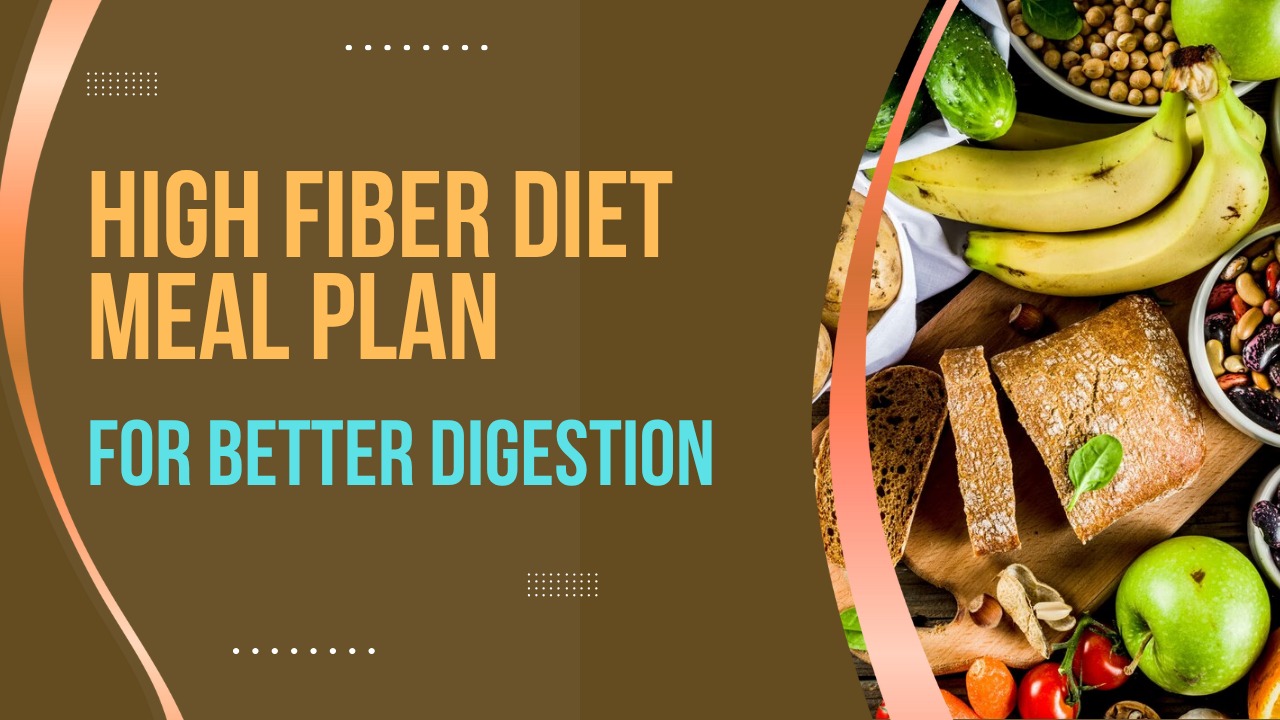High fiber diet meal plan strategies are essential in today’s fast-paced world where processed foods often replace nutritious options. Fiber, found in fruits, vegetables, legumes, and whole grains, is one of the most overlooked nutrients yet plays a vital role in overall health.
A high fiber diet meal plan doesn’t just support digestion—it also helps reduce cholesterol, control blood sugar, aid in weight loss, and lower the risk of diseases like heart disease and colon cancer. By choosing fiber-rich meals throughout the day, you can feel full longer and improve energy levels.
This guide will walk you through everything you need to know about adopting a high fiber diet meal plan. From understanding what fiber is to learning when and how to eat it, you’ll find expert-backed tips, meal examples, and lifestyle tweaks that can lead to better long-term health. Small daily choices can lead to powerful results when guided by fiber.
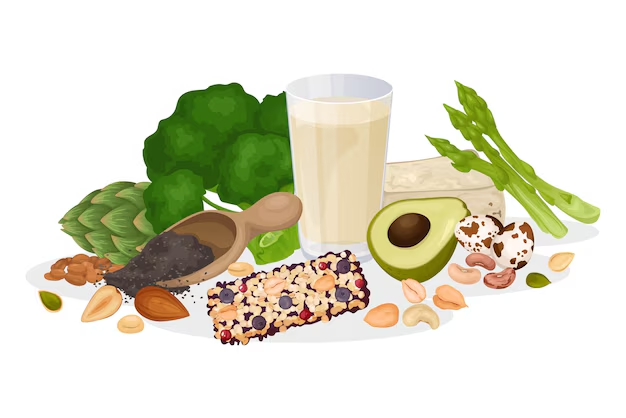
What is Fiber ?
Fiber is a type of carbohydrate found in plant-based foods that the body cannot digest. Unlike other carbs that break down into sugar, fiber passes through the digestive system mostly intact. There are two main types of fiber:
Soluble fiber – dissolves in water and forms a gel-like substance. It helps lower blood cholesterol and control blood sugar. Found in oats, apples, beans, and citrus fruits.
Insoluble fiber – adds bulk to stool and promotes regular bowel movements. Found in whole grains, nuts, seeds, and vegetables like carrots and cauliflower.
Fiber plays a vital role in digestive health, weight management, and disease prevention. Including it regularly in your meals through a high fiber diet meal plan ensures your body functions efficiently and stays energized throughout the day. Aim for a mix of both types for optimal health benefits.
Why is a High-Fiber Diet Important ?
A high fiber diet meal plan plays a crucial role in promoting long-term health. Fiber helps regulate the digestive system by adding bulk to stool and promoting regular bowel movements. This reduces the risk of constipation, hemorrhoids, and other digestive discomforts, making daily elimination more efficient and comfortable.
In addition to digestion, a high fiber diet meal plan helps maintain stable blood sugar levels by slowing down the absorption of sugar. This is especially important for people with diabetes or those looking to manage weight. Fiber also supports heart health by lowering LDL (bad) cholesterol and reducing the risk of heart disease.
Long-term adherence to a high fiber diet meal plan can also reduce the risk of chronic conditions such as type 2 diabetes, colon cancer, and obesity. By incorporating a variety of fiber-rich foods into your daily meals, you not only nourish your body but also build a strong foundation for lasting health and vitality.
Let’s explore the key benefits of a high-fiber diet:
Improves Digestive Health: Fiber prevents constipation by bulking up stool and promoting regular bowel movements. It can also alleviate symptoms of IBS (Irritable Bowel Syndrome).
Supports Weight Loss: High-fiber foods are more filling and lower in calories, helping you eat less without feeling deprived.
Regulates Blood Sugar Levels: Fiber, especially soluble fiber, slows the absorption of sugar and helps improve blood sugar levels — essential for diabetics.
Lowers Cholesterol: Soluble fiber binds to cholesterol particles and helps remove them from the body, reducing LDL (“bad”) cholesterol levels.
Reduces Risk of Chronic Diseases: High-fiber diets are linked with a lower risk of heart disease, stroke, type 2 diabetes, and colorectal cancer.
How Much Fiber Do You Need Daily ?
A high fiber diet meal plan starts with understanding how much fiber your body actually needs. Daily fiber intake recommendations vary by age and gender, but generally, adult women should aim for about 25 grams per day, while adult men should target around 38 grams. Unfortunately, most people consume far less than this—usually around 15 grams—leaving a large fiber gap.
To meet these goals, a high fiber diet meal plan should include plenty of fruits, vegetables, legumes, whole grains, seeds, and nuts. Spreading your intake throughout the day—such as starting with oats at breakfast, enjoying lentils at lunch, and adding leafy greens at dinner—can make hitting the target more manageable and enjoyable.
When increasing fiber, it’s important to do so gradually and drink plenty of water. This helps your digestive system adjust and prevents bloating or discomfort. With the right plan, meeting your daily fiber needs becomes a simple part of your healthy lifestyle.
According to the Dietary Guidelines:
Women under 50: 25 grams/day
Men under 50: 38 grams/day
Women over 50: 21 grams/day
Men over 50: 30 grams/day
However, most people consume less than 15 grams per day — less than half of what they should.
How to Start a High-Fiber Diet
Start slowly and increase your fiber intake gradually over a few weeks. This helps prevent gas, bloating, and cramping. Also, drink plenty of water — fiber works best when it absorbs water, helping to keep things moving through your digestive tract.
When to Eat Fiber-Rich Foods
Distribute fiber intake evenly throughout the day:
Breakfast: Start with oats, whole grains, or fruit.
Lunch & Dinner: Include legumes, vegetables, and whole grains.
Snacks: Choose nuts, seeds, or fruit with edible peels.
Timing fiber intake can also support blood sugar control and satiety across the day.
Top Tips for a Successful High-Fiber Diet
Start Your Day with a Fiber Boost
A great way to kick off your morning is by loading your breakfast with fiber. This not only helps keep you full longer but also sets the tone for a healthier day. Whole grains like oatmeal, bran cereal, or whole wheat toast are excellent sources to begin with. Pair them with fruits like berries, bananas, or apples for an added fiber punch.
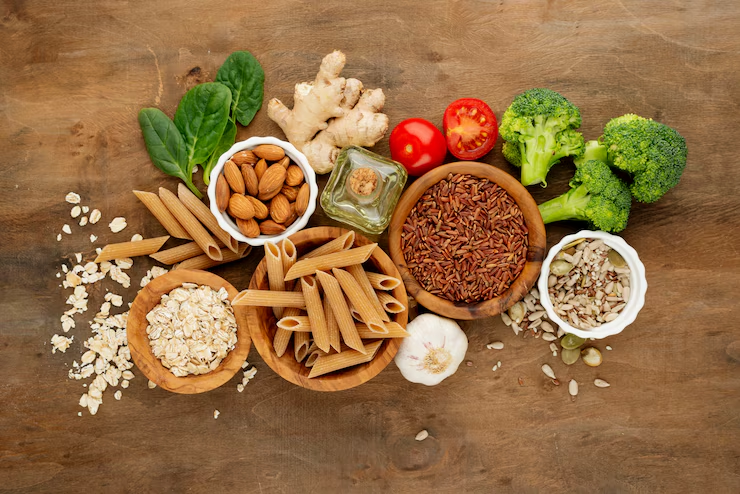
In a well-structured high fiber diet meal plan, breakfast plays a crucial role. Try adding chia seeds or flaxseeds to your smoothies or yogurt. These tiny additions are packed with both soluble and insoluble fiber, boosting your digestive health and energy levels early in the day.
Eating a fiber-rich breakfast also stabilizes blood sugar and reduces mid-morning cravings. When your day starts right, you’re more likely to make healthy choices throughout. That’s the power of a fiber-forward approach to morning meals.
Choose a high-fiber cereal (look for 5+ grams per serving) or oatmeal topped with fruit and nuts.
Example: 1 cup oatmeal + 1 banana + 1 tablespoon chia seeds = 11+ grams of fiber
Snack Smart
Smart snacking is a key part of maintaining energy levels and supporting digestion throughout the day. In a high fiber diet meal plan, snacks should not be overlooked—they help curb hunger and prevent overeating at main meals. Instead of reaching for chips or sweets, choose snacks that are naturally high in fiber.
Great options include raw veggies like carrots, cucumbers, and bell peppers paired with hummus, or a handful of almonds and walnuts. Fresh fruit like pears, apples (with skin), or a cup of mixed berries can also satisfy your sweet tooth while adding valuable fiber.
You can also prepare homemade snacks like roasted chickpeas or whole grain crackers with avocado. These choices offer satiety, better blood sugar control, and keep your digestion running smoothly. Including fiber-rich snacks in your daily routine ensures you’re meeting your fiber goals without sacrificing flavor or satisfaction.
Ditch chips for fiber-rich alternatives like air-popped popcorn, carrots with hummus, or a pear with almond butter.
Eat More Whole Grains
Whole grains are a foundational part of any effective high fiber diet meal plan. Unlike refined grains, whole grains retain their bran and germ, which are rich in dietary fiber, vitamins, and minerals. Adding them to your meals helps improve digestion, supports heart health, and keeps you full longer—making weight management easier.
Incorporate whole grains such as oats, quinoa, brown rice, barley, bulgur, and whole wheat into your meals. Start your day with oatmeal topped with fruits and seeds, enjoy a quinoa salad at lunch, and opt for brown rice or whole wheat pasta at dinner.
Swapping refined carbs for whole grains doesn’t require drastic changes. Simple switches—like choosing whole grain bread over white, or popcorn over chips—can make a big difference. By consistently including whole grains, you can boost your fiber intake and create a sustainable, nutritious routine within your high fiber diet meal plan.
Switch from white rice to brown rice, quinoa, barley, or whole-wheat bread.
Tip: Look for “100% whole grain” or “whole wheat” as the first ingredient on labels.
Load Up on Legumes
Legumes are a powerhouse addition to any high fiber diet meal plan. Beans, lentils, chickpeas, and peas are not only rich in fiber but also packed with plant-based protein, making them ideal for supporting both digestive health and muscle repair. They’re also low in fat and can help lower cholesterol.
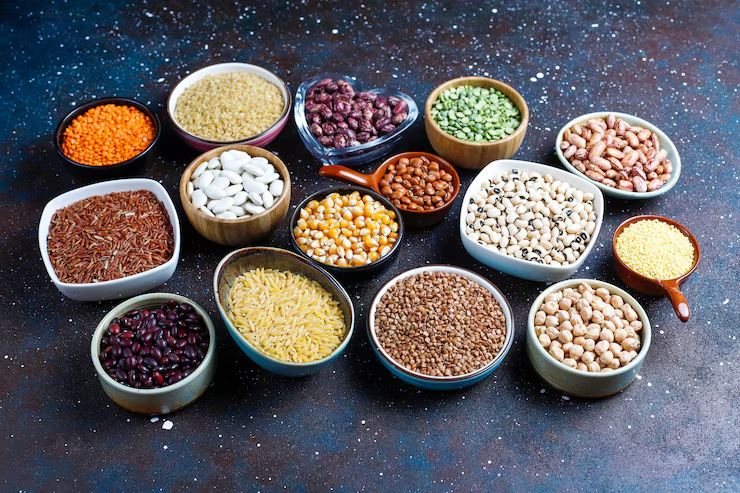
Adding legumes to your meals is easy and versatile. Toss black beans into a salad, enjoy lentil soup for lunch, or try a chickpea curry for dinner. Even snacks like roasted edamame or hummus with veggies can boost your daily fiber intake.
Regularly eating legumes keeps you feeling fuller longer, which helps control appetite and reduce unnecessary snacking. Plus, they provide slow-digesting carbs that stabilize blood sugar levels. Incorporating a variety of legumes into your high fiber diet meal plan ensures you’re getting both soluble and insoluble fiber, key for balanced gut health and overall wellness.
Beans, lentils, and peas are fiber powerhouses. Add them to soups, salads, tacos, or pasta.
Fiber Content: 1 cup of cooked lentils = 15 grams of fiber!
Add Vegetables to Every Meal
One of the easiest and most effective ways to follow a high fiber diet meal plan is by including vegetables in every meal. Vegetables are naturally high in both soluble and insoluble fiber, which help support digestion, regulate blood sugar, and keep you feeling full longer.
Start your day by adding spinach, tomatoes, or mushrooms to your scrambled eggs or smoothie. For lunch, include leafy greens like kale or romaine in sandwiches or grain bowls. At dinner, fill half your plate with fiber-rich veggies such as broccoli, Brussels sprouts, or carrots — either roasted, steamed, or stir-fried.
Not only do vegetables increase your fiber intake, but they also provide essential vitamins, minerals, and antioxidants that protect your health. By making vegetables a staple in your high fiber diet meal plan, you’ll improve your gut health, reduce cravings, and support long-term weight management in a simple, delicious way.
Half your plate should be vegetables. Add spinach to omelets, toss greens into sandwiches, or blend kale into smoothies.
Don’t Forget Fruits (With the Peel!)
Fruits are one of the easiest and tastiest ways to boost fiber intake, making them essential in any high fiber diet meal plan. Many fruits offer both soluble and insoluble fiber, which help regulate digestion, support gut bacteria, and promote long-term heart health.
To get the most fiber, always eat fruits with the peel when possible. Apples, pears, plums, and peaches have skins rich in fiber and antioxidants. Berries such as raspberries and blackberries are also fiber-dense and can easily be added to breakfasts, smoothies, or eaten as snacks.
Incorporate fruits throughout your day—top your oatmeal with sliced bananas and berries, add apple slices to salads, or enjoy a pear after dinner. These small habits help keep your high fiber diet meal plan effective and enjoyable, while naturally curbing sweet cravings and fueling your body with vital nutrients.
Apples, berries, oranges, and avocados are fantastic sources. Eat the skin whenever possible for extra fiber.
Bonus: A medium apple = 4.4 grams of fiber.
Use Seeds and Nuts
In a high fiber diet meal plan, seeds and nuts are powerful allies. They are nutrient-dense, packed with healthy fats, plant-based protein, and of course—fiber. Even small portions can deliver a big boost to your daily fiber goals without taking up much plate space.
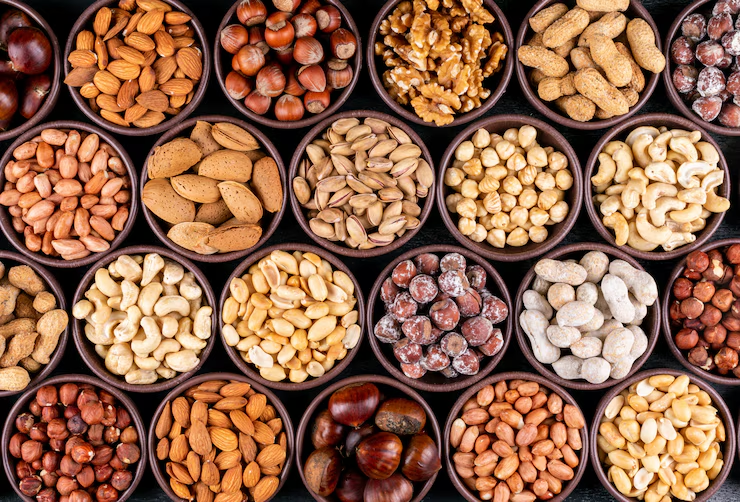
Chia seeds, flaxseeds, and sunflower seeds are excellent fiber sources. Just two tablespoons of chia seeds contain about 10 grams of fiber! Sprinkle them on yogurt, oatmeal, or blend them into smoothies. Similarly, almonds, pistachios, and walnuts make great high-fiber snacks or toppings for salads and stir-fries.
Incorporating a variety of seeds and nuts into your meals not only diversifies texture and flavor but also strengthens the nutritional value of your high fiber diet meal plan. Just be mindful of portion sizes, especially for nuts, to keep calories in check while maximizing fiber benefits. A small handful a day goes a long way.
Chia, flaxseeds, almonds, and walnuts add crunch and fiber. Sprinkle them on yogurt, oatmeal, or salads.
Hydrate Consistently
Staying hydrated is essential when following a high fiber diet meal plan. Fiber absorbs water as it moves through your digestive system, helping to create bulk and keep things moving smoothly. Without enough fluids, high fiber intake can actually lead to constipation and bloating.
Aim to drink at least 8–10 glasses of water daily, especially when increasing your fiber intake. Herbal teas, infused waters with lemon or cucumber, and broths can also contribute to your hydration. Try sipping water throughout the day rather than all at once, as consistent hydration supports better digestion and nutrient absorption.
Proper hydration enhances the effectiveness of your high fiber diet meal plan by supporting metabolism, maintaining energy levels, and aiding in the elimination of toxins. If you’re adding more fruits, vegetables, whole grains, and legumes to your meals, make sure water is always close by to help your body process all that healthy fiber.
Fiber needs water to move effectively through your system. Aim for 8+ glasses of water a day.
Sample 7-Day High-Fiber Meal Plan
Here is your high fiber diet meal plan in an easy-to-follow weekly table format:
| Day | Breakfast | Lunch | Dinner | Snack | Fiber Total (Approx.) |
|---|---|---|---|---|---|
| Day 1 | Oatmeal + banana + flaxseeds | Lentil soup + whole-grain bread | Grilled chicken + quinoa + roasted vegetables | Apple + almond butter | ~35g |
| Day 2 | Chia pudding + berries | Chickpea salad wrap | Brown rice + black bean stir-fry | Carrot sticks + hummus | ~38g |
| Day 3 | Whole-grain toast + avocado | Barley vegetable soup | Spaghetti with lentil Bolognese | Popcorn (air-popped) | ~40g |
| Day 4 | Smoothie (spinach, pear, chia seeds) | Quinoa + sweet potato bowl | Grilled salmon + farro + broccoli | Berries + yogurt | ~33g |
| Day 5 | High-fiber cereal + almond milk + banana | Whole-wheat pita + falafel + tabbouleh | Black bean tacos + corn salsa | Apple slices + walnuts | ~36g |
| Day 6 | Scrambled eggs + sautéed kale + whole grain toast | Edamame + brown rice bowl | Lentil stew + salad | Pear + almonds | ~34g |
| Day 7 | Yogurt + berries + granola | Avocado toast + side salad | Quinoa-stuffed peppers | Celery + peanut butter | ~32g |
This structured high fiber diet meal plan supports digestion, weight management, and overall health.
Who Should Follow a High-Fiber Diet ?
A high-fiber diet is beneficial for almost everyone, especially:
People with constipation or irregular bowel movements
Those managing weight, diabetes, or heart disease
Anyone looking to maintain overall health and longevity
However, if you have digestive disorders like Crohn’s or ulcerative colitis, consult a healthcare provider before significantly increasing fiber.
Key Tips for High-Fiber Success
Eat fiber at every meal
Start your day strong with oatmeal or high-fiber cereal
Make whole grains your staple
Eat more beans and lentils
Load up on vegetables and fruits
Snack on nuts, seeds, and popcorn
Drink plenty of water
Read labels and plan your fiber intake mindfully
Conclusion
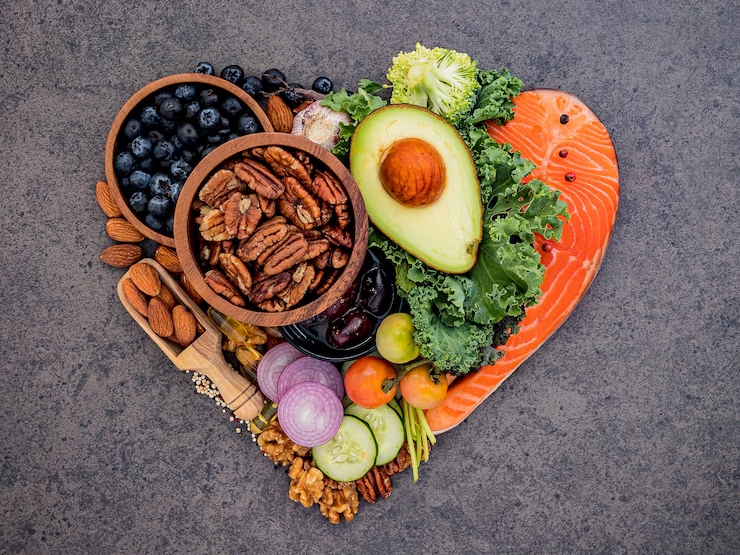
A high fiber diet meal plan is one of the most effective and natural ways to improve overall health. Whether your goal is weight loss, better digestion, or disease prevention, fiber plays a vital role. It supports gut health, helps manage blood sugar, lowers cholesterol, and keeps you feeling full longer—making it a key player in any wellness routine.
By incorporating small changes daily, like swapping refined carbs for whole grains, adding more fruits, vegetables, legumes, seeds, and nuts, and following a structured high fiber diet meal plan, you can meet your fiber needs without stress. These foods not only provide fiber but also essential nutrients your body craves.
Start slowly to let your digestive system adjust. Drink plenty of water to help fiber work efficiently, and aim for consistency. With these simple steps and the meal ideas above, adopting a high fiber diet meal plan can become a lasting and enjoyable lifestyle change.
FAQs
Q1. What is a high fiber diet meal plan ?
A high fiber diet meal plan is a structured eating guide focused on increasing daily fiber intake through whole foods like fruits, vegetables, legumes, whole grains, nuts, and seeds. It helps support digestion, weight loss, blood sugar control, and heart health. The goal is to consume 25–38 grams of fiber per day depending on age and gender.
Q2. Why is fiber important in daily meals ?
Fiber promotes satiety, regulates bowel movements, stabilizes blood sugar levels, and lowers cholesterol. A high fiber diet meal plan ensures consistent fiber intake throughout the day to improve overall well-being and reduce the risk of chronic diseases such as diabetes, heart disease, and colon cancer.
Q3. How do I start a high fiber diet meal plan without digestive issues ?
Start gradually by adding small amounts of fiber-rich foods to your meals. Drink plenty of water to help fiber move through your digestive tract. A high fiber diet meal plan should include hydration and variety to avoid bloating or discomfort.
Q4. Can a high fiber diet meal plan help with weight loss ?
Yes. Fiber slows digestion and keeps you full longer, reducing unnecessary snacking. A high fiber diet meal plan often results in lower calorie consumption and better portion control, aiding sustainable weight loss.
Q5. Are there any risks in following a high fiber diet meal plan ?
Sudden increases in fiber without enough water can cause gas or bloating. It’s important to increase fiber slowly and pair it with fluids. A balanced high fiber diet meal plan minimizes these risks and maximizes health benefits.


